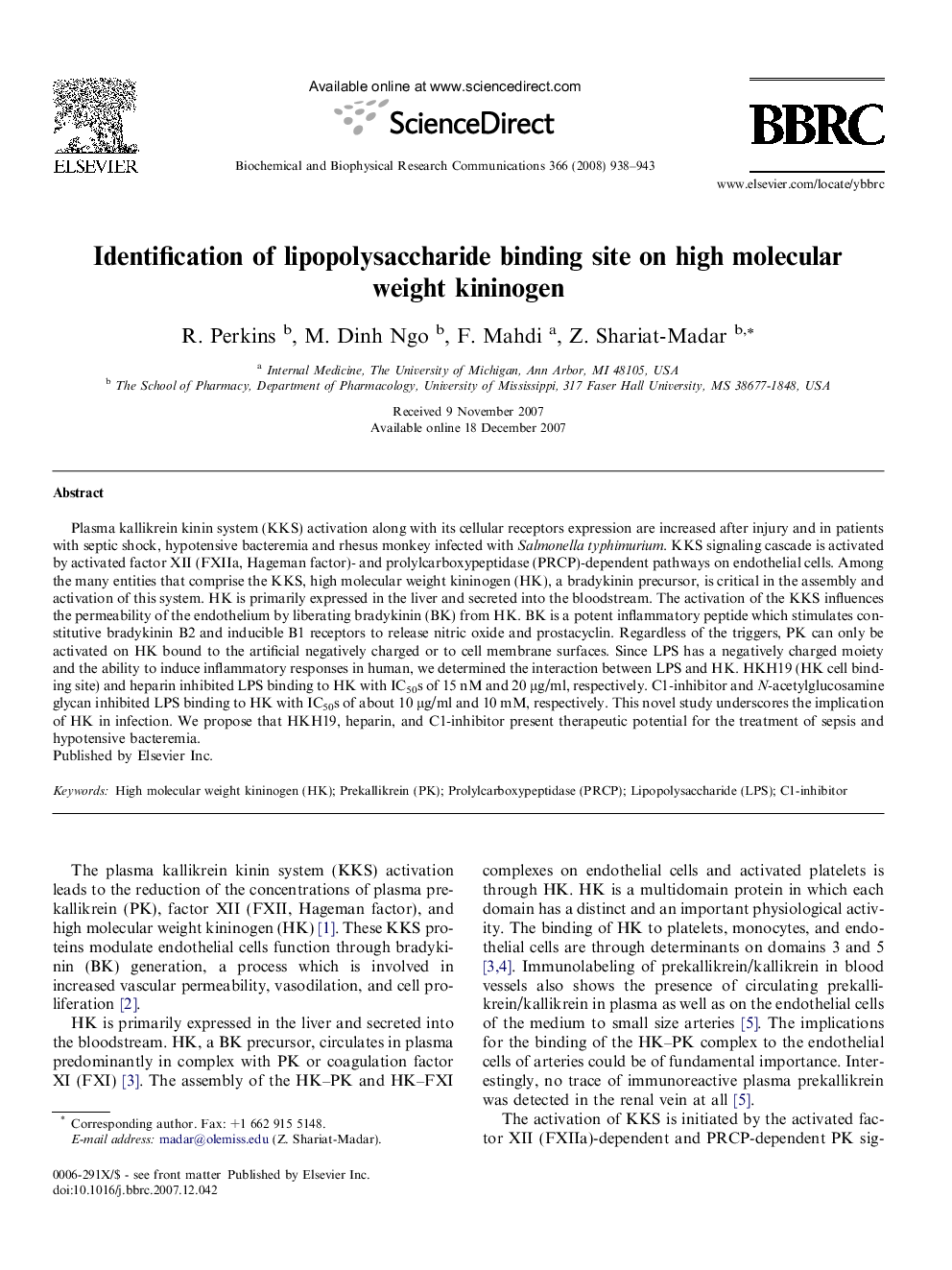| Article ID | Journal | Published Year | Pages | File Type |
|---|---|---|---|---|
| 1936580 | Biochemical and Biophysical Research Communications | 2008 | 6 Pages |
Plasma kallikrein kinin system (KKS) activation along with its cellular receptors expression are increased after injury and in patients with septic shock, hypotensive bacteremia and rhesus monkey infected with Salmonella typhimurium. KKS signaling cascade is activated by activated factor XII (FXIIa, Hageman factor)- and prolylcarboxypeptidase (PRCP)-dependent pathways on endothelial cells. Among the many entities that comprise the KKS, high molecular weight kininogen (HK), a bradykinin precursor, is critical in the assembly and activation of this system. HK is primarily expressed in the liver and secreted into the bloodstream. The activation of the KKS influences the permeability of the endothelium by liberating bradykinin (BK) from HK. BK is a potent inflammatory peptide which stimulates constitutive bradykinin B2 and inducible B1 receptors to release nitric oxide and prostacyclin. Regardless of the triggers, PK can only be activated on HK bound to the artificial negatively charged or to cell membrane surfaces. Since LPS has a negatively charged moiety and the ability to induce inflammatory responses in human, we determined the interaction between LPS and HK. HKH19 (HK cell binding site) and heparin inhibited LPS binding to HK with IC50s of 15 nM and 20 μg/ml, respectively. C1-inhibitor and N-acetylglucosamine glycan inhibited LPS binding to HK with IC50s of about 10 μg/ml and 10 mM, respectively. This novel study underscores the implication of HK in infection. We propose that HKH19, heparin, and C1-inhibitor present therapeutic potential for the treatment of sepsis and hypotensive bacteremia.
